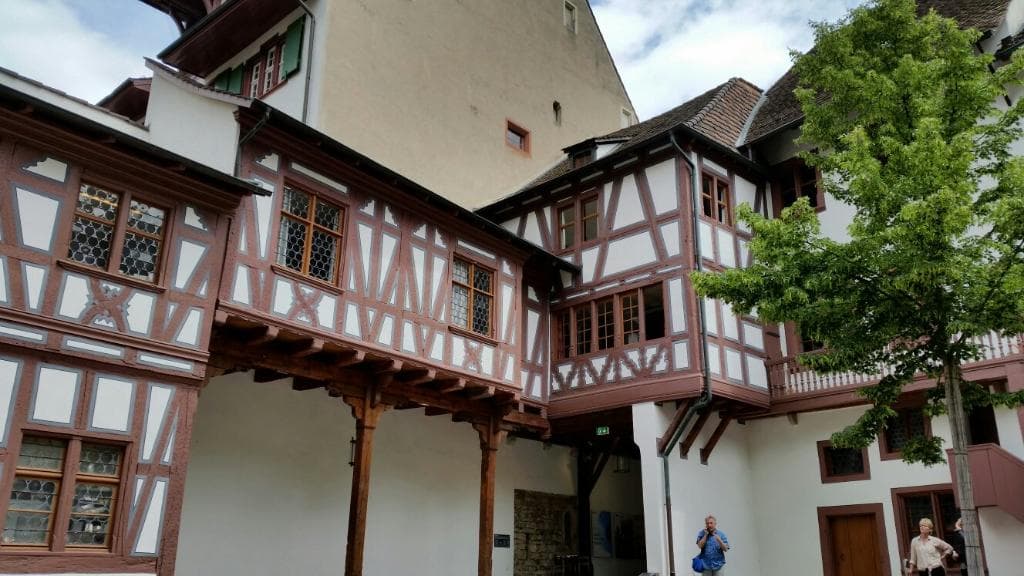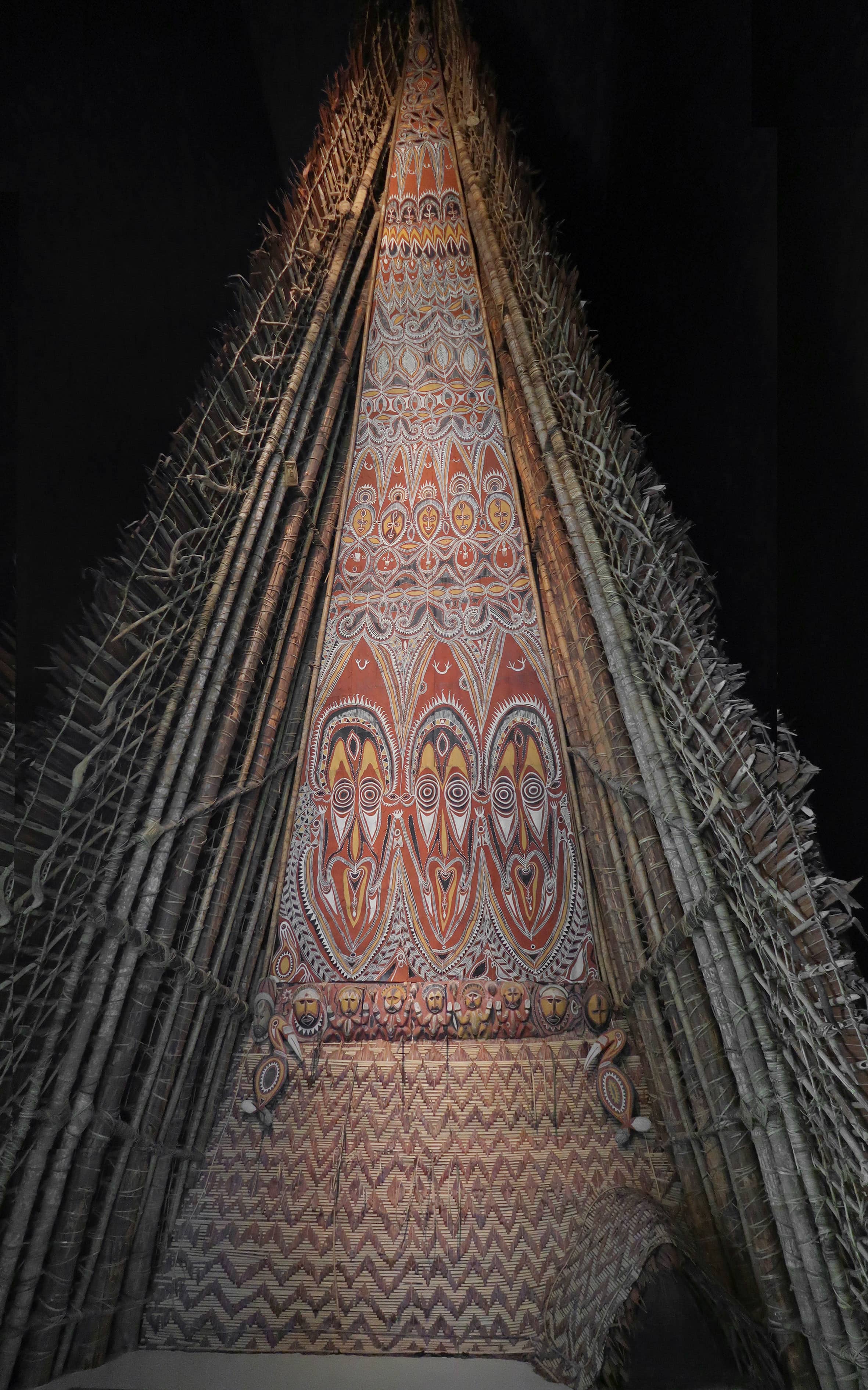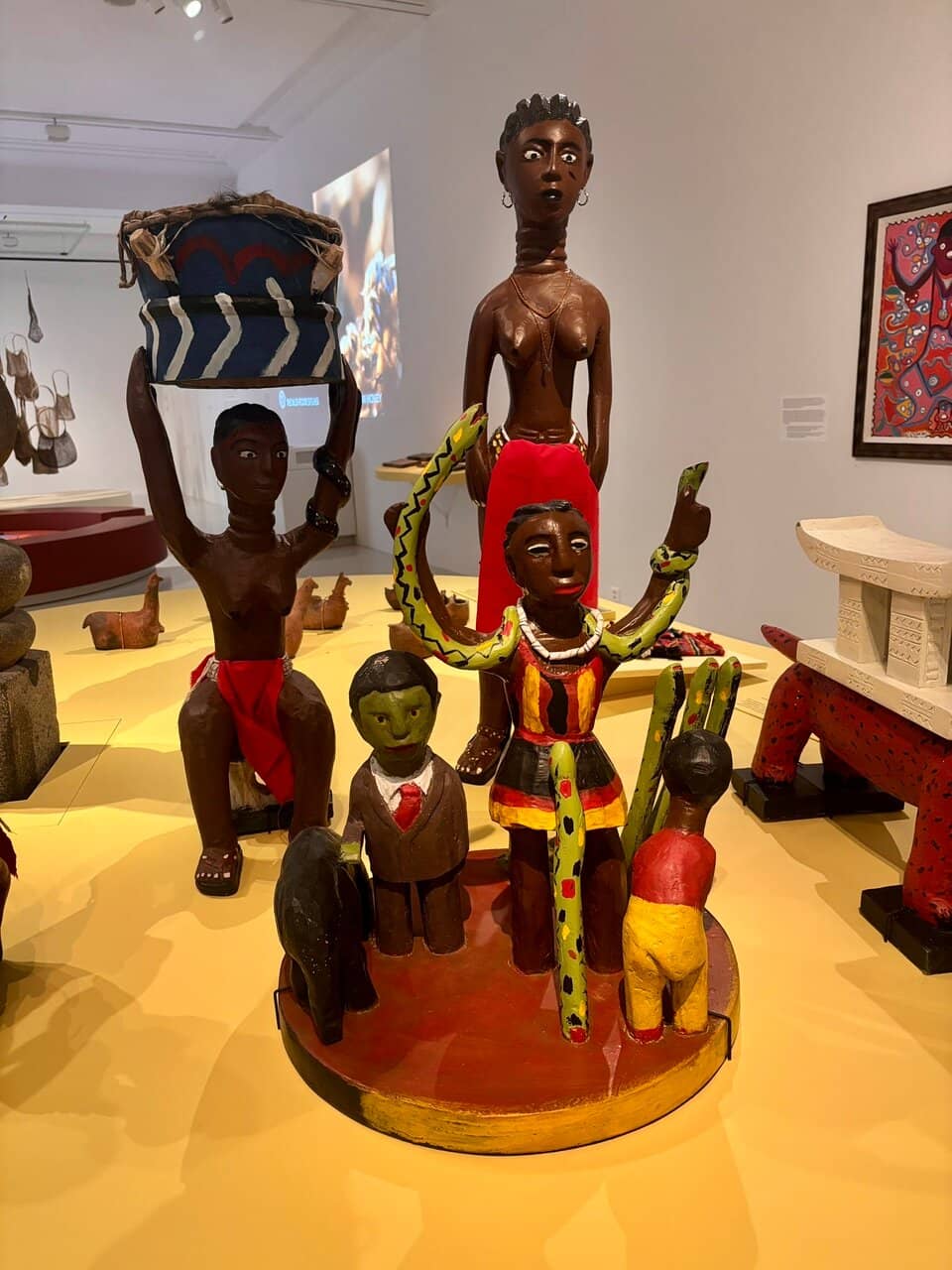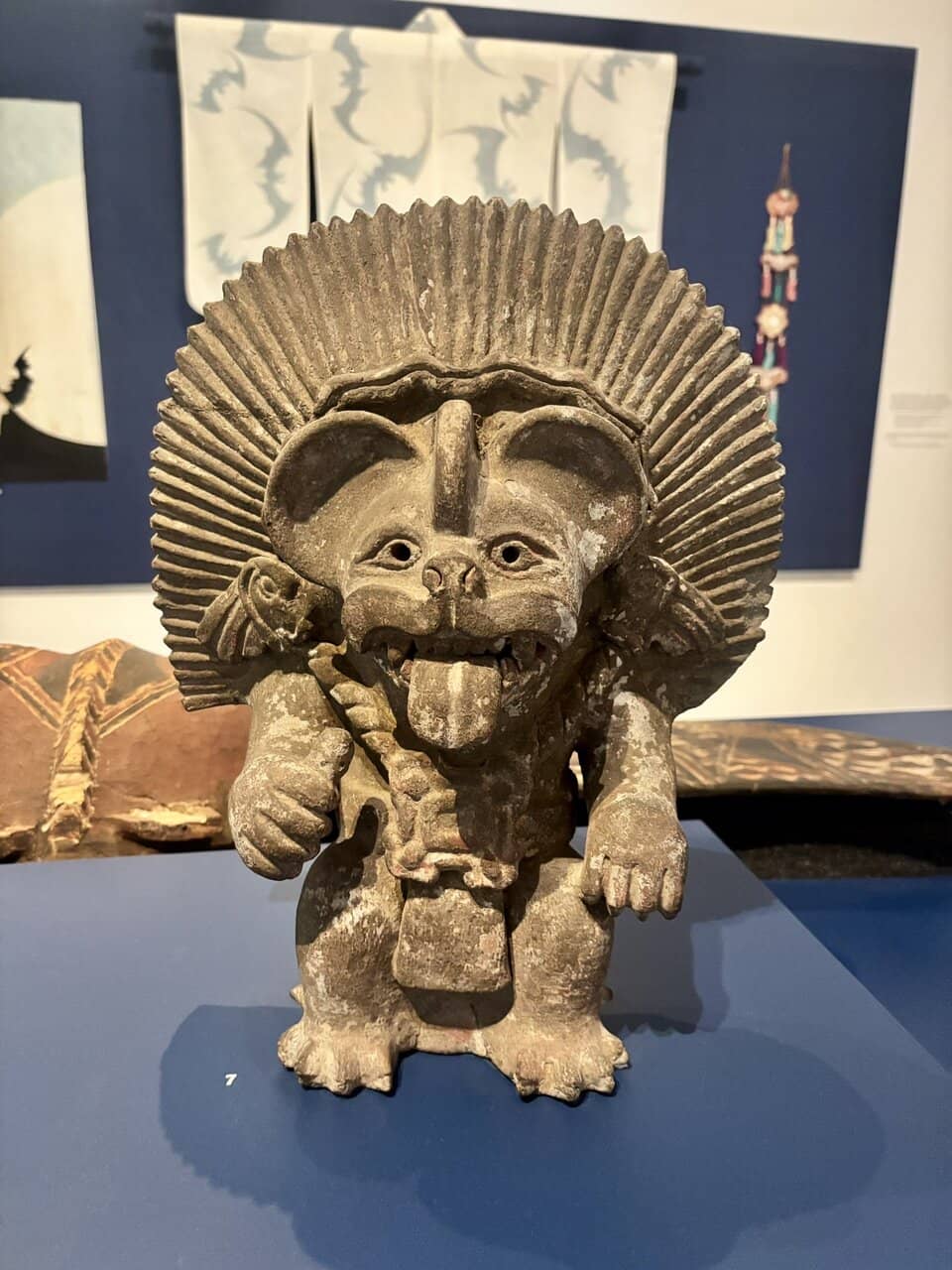
Museum der Kulturen Basel
Explore global cultures through unique ethnographic artifacts and striking architecture in Basel's heart.

Highlights
Must-see attractions

Social
From TikTok & Reddit
Best Time
Fewer crowds, more personal time

Museum der Kulturen Basel
Best Time
Fewer crowds, more personal time

Highlights
Must-see attractions
Explore global cultures through unique ethnographic artifacts and striking architecture in Basel's heart.
"Thoughtful, creative, and illuminating exhibitions that go beyond the surface."

Grab an Info Booklet! :book:
Essential for understanding exhibits if you don't speak German. Ask staff for English versions.
Allocate Ample Time :clock:
Each floor is rich with detail; plan for several hours to truly absorb the content.

Highlights
Discover the most iconic attractions and experiences

Papua New Guinea Ceremonial House
Main Hall
A striking facade of a ceremonial house, offering a glimpse into Oceanic cultures.

Global Artifact Collections
Various Floors
Explore diverse cultures through fascinating displays of Indonesian, Oceanic, Asian, and African artifacts.

Unique Exhibitions
Rotating Floors
Discover unexpected fascinations, from intricate textiles to historical anchors, presented with depth.
Plans like a pro.
Thinks like you
Planning Your Visit
Language Barrier Alert
Time for Immersion
Best Times
Insider Tips
from TikTok, Instagram & Reddit
Grab an Info Booklet! :book:
Essential for understanding exhibits if you don't speak German. Ask staff for English versions.
Allocate Ample Time :clock:
Each floor is rich with detail; plan for several hours to truly absorb the content.
Check for Free Entry :moneybag:
Some visitors mention free entry during the last hour of operation. Worth inquiring!
Bistro Break :coffee:
The attached bistro is highly recommended for a pleasant break after exploring.
Museum of Cultures (Basel)
Tips
from all over the internet
Grab an Info Booklet! :book:
Essential for understanding exhibits if you don't speak German. Ask staff for English versions.
Allocate Ample Time :clock:
Each floor is rich with detail; plan for several hours to truly absorb the content.
Check for Free Entry :moneybag:
Some visitors mention free entry during the last hour of operation. Worth inquiring!
Bistro Break :coffee:
The attached bistro is highly recommended for a pleasant break after exploring.
What Travellers Say
Reviews Summary
Visitors praise the Museum der Kulturen Basel for its thoughtful, creative, and illuminating exhibitions, particularly highlighting the unique global artifact collections and the impressive architecture. However, a significant drawback for many is the lack of English explanations for most exhibits, making information booklets essential for non-German speakers.
"This is an unusual and excellent museum in the centre of Basel, near the cathedral. Each floor has a different exhibition with an interesting theme. The English language leaflets which explain the exhibits are essential reading to get the most from the exhibitions.
I visited several times over the course of one week and it took me several hours to look and read my way around each floor.
Each exhibition is thoughtful, creative and illuminating.
Who would have thought I’d fine a collection of anchors so fascinating?
Excellent place, and the attached bistro is great too!"
Victoria Pearson
"A wonderful museum about indigenous cultures from around the world. I was especially touched by the display of Indonesian and Oceanic cultures. I also want to mention that the staff of this museum are very friendly. There are lockers available. The collection is presented in a clear manner and the texts were well written."
Jelly Tree
"Whilst there are some very cool items (in particular the façade of the ceremonial house of Papua New Guinea- the only object with English captions I saw in the whole museum)- I’m glad my friend and I went in for free in the last hour. There are NO English captions/explanations throughout and if I can read German correctly very few objects were before the 19th century. Besides the very cool ceremonial house, the building exterior is the best thing. I didn’t see how the arrangement on each floor made sense… but then again not a German speaker!"
Jennifer Smith
What People Like
What People Dislike
Frequently Asked Questions
🚇 🗺️ Getting There
The Museum der Kulturen Basel is conveniently located in the city center, near the Basel Minster (Cathedral). It's easily accessible by public transport. Tram lines 1, 2, 8, and 11 stop nearby at the 'Münsterplatz' or 'Barfüsserplatz' stations. If you're arriving by train at Basel SBB, you can take a tram directly to the museum area. Walking from the main train station is also an option, taking about 15-20 minutes.
Parking in the immediate vicinity of the museum can be challenging due to its central location. It's recommended to use public transport. If you must drive, there are several underground parking garages in the city center, such as Parkhaus Steinen or Parkhaus Elisabethen, from which you can walk to the museum.
Yes, Basel is a very bike-friendly city. There are numerous bike racks available around the city center, including near the museum and the Basel Minster. Cycling is a great way to explore Basel and reach the Museum der Kulturen.
🎫 🎫 Tickets & Entry
The museum typically opens from Tuesday to Sunday, usually from 10 AM to 5 PM. However, hours can vary, especially on public holidays. It's always best to check the official Museum der Kulturen Basel website for the most up-to-date opening hours before your visit.
Admission prices can vary, but generally, an adult ticket is around CHF 14. Reductions are often available for students, seniors, and groups. Some visitors have noted that entry might be free during the last hour of operation, so it's worth inquiring about this possibility.
For general admission, booking tickets in advance is usually not required, especially if you visit during regular hours. However, for special exhibitions or if you are part of a large group, it might be advisable to book ahead to secure your spot and potentially save time.
Discounts are typically available for students, seniors, and children. As mentioned, some visitors have reported free entry during the final hour of the museum's operating day. It's a good idea to check the museum's official website or inquire at the ticket counter for any current promotions or special offers.
Yes, the museum provides lockers for visitors to store their belongings. This is a convenient service that allows you to explore the exhibitions without carrying extra bags or coats.
🎫 🧭 Onsite Experience
This is a common point of feedback: many exhibits at the Museum der Kulturen Basel primarily feature explanations in German. While some key items might have English captions, it's highly recommended to obtain an English information booklet for each floor to fully understand the context and details of the displays. Staff may be able to provide these.
Visitors consistently recommend allocating a significant amount of time. To truly appreciate the depth and detail of each exhibition, plan for at least several hours. Some visitors have spent multiple visits over a week to explore each floor thoroughly.
The museum houses a diverse collection of ethnographic artifacts from around the world. You can expect to see items related to indigenous cultures, including displays from Indonesia, Oceania, Asia, and Africa. Past exhibitions have featured unique items like ceremonial houses, textiles, and even collections of historical anchors.
While the museum's content is rich and detailed, it may be more engaging for older children and adults who can appreciate the ethnographic context. The exhibits are thoughtfully presented, but the lack of extensive English explanations might be a challenge for younger visitors. However, the striking visual elements, like the ceremonial house facade, can still capture their attention.
Absolutely. The museum building, designed by Herzog & de Meuron, is architecturally significant and impressive from the outside. The interior spaces are also thoughtfully designed to complement the exhibitions, creating a unique atmosphere for exploring global cultures.
🍽️ 🍽️ Food & Dining
Yes, the museum has an attached bistro that is highly regarded by visitors. It's a great place to relax and enjoy a meal or a drink after your visit, offering a pleasant dining experience.
Given its central location, there are numerous restaurants, cafes, and eateries in the vicinity of the Museum der Kulturen Basel. You'll find a wide range of culinary options to suit different tastes and budgets in the surrounding streets of Basel's old town.
📸 📸 Photography
Photography policies can vary, but generally, non-flash photography for personal use is often permitted in museum galleries. However, it's always best to check for specific signage or ask museum staff to confirm the current rules regarding photography to avoid any issues.
The striking facade of the ceremonial house from Papua New Guinea is a definite highlight for photography. The museum's modern architecture also offers interesting visual lines. Beyond specific exhibits, the overall atmosphere and the unique displays provide ample opportunities for memorable shots.
For Different Travelers
Tailored advice for your travel style
👨👩👧 Families with Kids
Consider visiting during less crowded times to allow children more space to explore. The attached bistro is a great spot for a family meal or snack. If your children have a keen interest in different cultures and history, this museum can be a rewarding experience, especially with the aid of the provided information booklets.
📚 Culture Enthusiasts & Researchers
Researchers will find the detailed information booklets invaluable for understanding the context and significance of the artifacts. The opportunity to spend extended time with each floor's exhibition, especially during off-peak hours, allows for thorough study and appreciation. The museum's unique approach to showcasing cultural heritage makes it a significant resource for academic and personal enrichment.
📸 Photography & Architecture Buffs
While non-flash photography is generally permitted, always check for specific signage. The museum's thoughtful exhibition design also creates interesting visual compositions. For those who appreciate both modern architecture and the visual storytelling of global cultures, this museum provides a fantastic backdrop for capturing memorable images.
Deep Dives
In-depth insights and expert knowledge
Navigating the Language Barrier
To mitigate this, visitors strongly recommend obtaining the English information booklets provided for each floor. These booklets offer detailed insights and translations, allowing for a more comprehensive understanding of the displays. Planning to read these alongside viewing the exhibits is crucial for maximizing the educational value of your visit. Some reviewers suggest that if you are not a German speaker, you might not grasp the full meaning of the arrangements on each floor without these aids.
Despite this linguistic hurdle, the visual impact of many exhibits, such as the impressive ceremonial house facade, can still be appreciated. However, for those seeking a truly immersive and informative experience, a proactive approach to language accessibility is key. Consider this a heads-up to enhance your preparation and ensure a rewarding visit.
The Architectural Marvel
From the outside, the museum presents a unique and imposing facade that hints at the diverse cultural treasures housed within. Upon entering, visitors are met with spaces that are both grand and intimate, carefully curated to enhance the viewing experience of the global artifacts. The architectural design plays a crucial role in how the exhibitions are perceived, creating an atmosphere that is both educational and aesthetically pleasing.
Reviewers often highlight the building's exterior as a standout feature, and the interior spaces are equally praised for their contribution to the overall museum experience. The integration of architecture and exhibition design makes the Museum der Kulturen Basel a compelling destination for those interested in both culture and contemporary design.
Understanding the Collections
Exhibitions typically focus on specific regions or themes, with past highlights including extensive displays of Indonesian and Oceanic cultures, as well as collections from Asia and Africa. Visitors have expressed fascination with the breadth of these collections, finding even seemingly ordinary objects, like a collection of anchors, to be surprisingly captivating when presented with context. The museum strives for a thoughtful and creative presentation, making each exhibition illuminating.
While the primary language of explanation is German, the depth of information available through the English booklets ensures that visitors can still engage meaningfully with the rich tapestry of global heritage presented. The museum's commitment to detailed accounts and research makes it a valuable resource for anyone interested in ethnography and world cultures.






Social
from TikTok, Instagram & Reddit